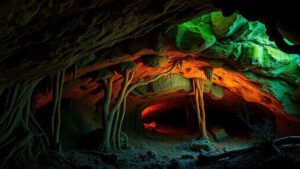Investigating abandoned lead and zinc mines in the Hanover District for galena and sphalerite crystals.
Investigating Abandoned Lead and Zinc Mines in the Hanover District for Galena and Sphalerite Crystals
The Hanover District, located in Pennsylvania, is renowned for its rich geological history and sources of various minerals, including lead and zinc. For rockhounds and mineral collectors, this area presents a unique opportunity to explore abandoned mines in search of galena and sphalerite crystals. This article provides an overview of what to expect when investigating these sites, including mineral identification, safety precautions, and practical tips for collectors.
The Geology of the Hanover District
The Hanover District is primarily situated within the Appalachian Mountain range, characterized by sedimentary rock formations. lead and zinc found in this area are primarily derived from the mineral galena (PbS) for lead and sphalerite (ZnS) for zinc. Both minerals crystallize in the cubic system, which makes them appealing for collectors due to their distinctive appearances and formations.
- Galena can typically be found in granular to massive forms and often exhibits perfect cubic cleavage.
- Sphalerite, commonly found in brown to yellow hues, displays excellent cubic crystals as well but also can appear in a resinous luster.
Historical Context
The mining of lead and zinc in the Hanover District dates back to the 1800s, when significant deposits were first discovered. The peak of mining activity occurred in the early 20th century, leading to a notable depletion of accessible ore. Today, several mines remain abandoned, creating a unique setting for mineral exploration.
Identifying galena and sphalerite can enrich the experience of any rockhound. Here are key characteristics:
- Galena: Metallic gray to silver color, high density (7.5 g/cm³), and resembles lead. Its cubic cleavage makes it distinct in the field.
- Sphalerite: Known for its color variation ranging from yellow to dark brown. It has a lower density (3.9 to 4.1 g/cm³) compared to galena, and it commonly exhibits a resinous to glassy luster.
Safety Precautions When Exploring Abandoned Mines
Before embarking on a collecting expedition, safety must be a priority. Abandoned mines can pose various hazards, including unstable rock formations, deep shafts, and the potential for toxic minerals. Consider the following precautions:
- Always wear a hard hat, gloves, and sturdy footwear.
- Bringing a flashlight and extra batteries can help navigate dark mine interiors.
- Never enter a mine solo; always go with a buddy.
- Be aware of your surroundings and look out for weak ceilings or loose debris.
Practical Tips for Collectors
To maximize your chances of finding quality specimens, consider the following strategies:
- Focus on Tailings Piles: Often, waste rock piles contain a significant amount of exposed mineral content.
- Use a Map: Acquire old mining maps to pinpoint areas where galena and sphalerite were historically abundant.
- Join Local Rockhounding Groups: Engaging with experienced collectors can provide insights on the best spots and safety practices.
Real-World Applications of Your Findings
The minerals collected can serve various purposes, from personal collections to educational materials. Galena and sphalerite can also be processed for their metals, contributing to mining industries or recycled for use in technological applications. For example:
- Galena is a primary source of lead, essential for batteries and radiation shielding materials.
- Sphalerite is critical in the production of zinc, which is key for galvanizing steel to prevent rust.
Conclusion
Investigating abandoned mines in the Hanover District can be exhilarating for rockhounds and mineral collectors. By focusing on detailed mineral identification, adhering to safety protocols, and employing practical collecting strategies, enthusiasts can enhance their mineral collections while enjoying the historical significance and natural beauty of the area. Always remember to take what you can carry responsibly, leaving the environment as you found it for future explorations.



